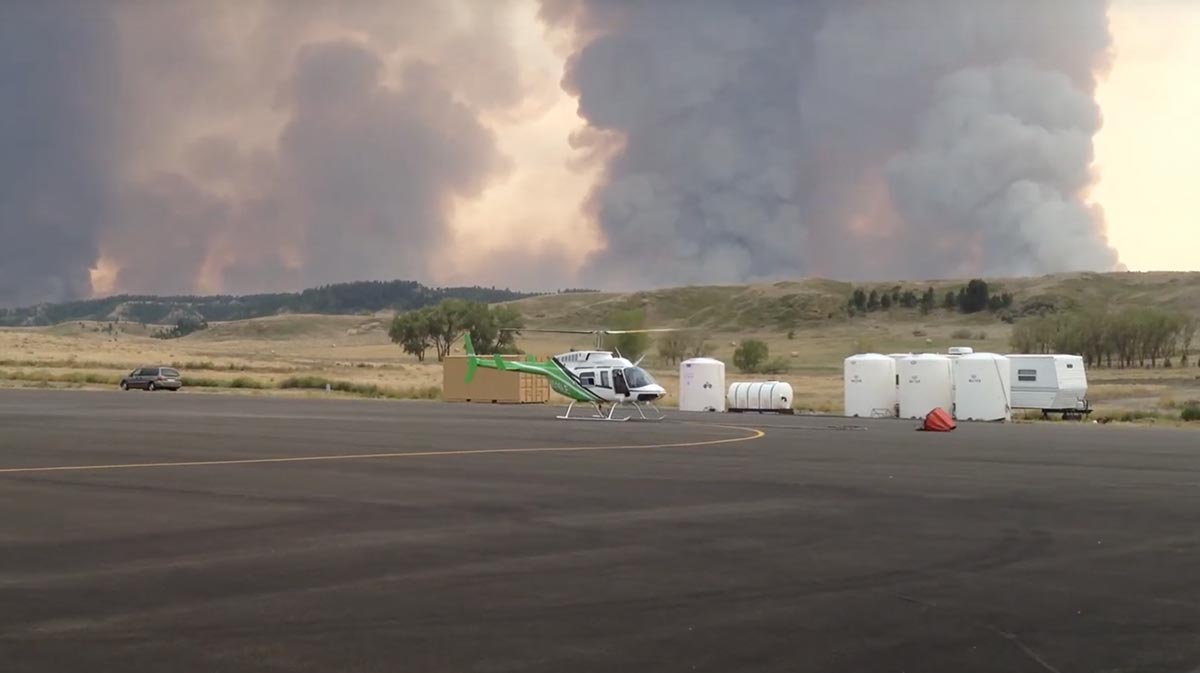Wildfires are some of the most unpredictable and destructive natural disasters. They are capable of consuming thousands of acres in a matter of hours. Firefighters on the ground play an integral role in battling these infernos. However, the aerial support provided by a helicopter firefighter is also essential. These high-stakes missions require advanced flight techniques, specialized equipment, critical decision-making, and seamless coordination with ground crews.
For aspiring helicopter pilots training at Leading Edge Flight Academy, the world of aerial firefighting offers an exciting and highly impactful career path. Below, we’ll explore the science and strategy behind every mission. We’ll explore how rotorcraft and skilled pilots rise to the challenge of combating nature’s fiercest threat.
The Role of a Helicopter Firefighter
Helicopter firefighters are the unsung heroes of wildfire response, using their precision and agility to fly directly into extreme conditions. Rotorcraft provide unique advantages in aerial firefighting, including:
- Accuracy: Helicopters can hover and drop water or fire retardant with pinpoint precision, targeting specific areas to slow the spread of flames.
- Accessibility: Rotorcraft can reach remote or rugged areas that ground crews and fixed-wing aircraft cannot access, making them invaluable in challenging terrains.
- Coordination: Helicopters often act as aerial reconnaissance, gathering critical information and communicating with ground crews to strategize firefighting efforts.
These versatile machines allow firefighting teams to move swiftly and easily, saving lives in the process.
The Science Behind Helicopter Firefighting
Specialized Equipment
Helicopter firefighters rely on advanced tools and technologies to perform water drops and communicate with ground teams. Two key tools include:
- Bambi Buckets: Large, collapsible buckets suspended under the helicopter can carry up to 2,000 gallons of water or fire retardant. Pilots skillfully maneuver these to release their payloads where they’re needed most.
- Helitankers: More advanced helicopters may feature internal tanks that enable faster refills and precise drops without external attachments.
Pilot training also includes learning how to manage loads, balance weight distribution, and operate within safety margins when working with these systems.
Extreme Flying Conditions
Wildfires create erratic, ever-changing conditions that make aerial operations incredibly challenging. Those who go on these missions must contend with:
- Thermal Updrafts: Rising heat from the flames creates turbulent air that requires pilots to make minute adjustments constantly.
- Reduced Visibility: Smoke fills the air, obscuring visibility and complicating navigation. Pilots must often work with instruments and coordinate visually with other aircraft.
- Rapid Response Requirements: Time is of the essence in wildfire scenarios, requiring pilots to deploy quickly and adapt to high-pressure situations.
These environmental factors demand precision, skill, and unshakable focus from the pilots, all of which are instilled during rigorous flight training programs.
Coordination with Ground Crews
Collaboration is key to a successful firefighting operation, and helicopter crews work closely with ground teams to strategize and maximize their impact.
- Aerial Reconnaissance: Helicopter pilots often survey the fire from above, monitoring its spread and identifying critical zones to direct ground efforts.
- Communication Systems: Helicopters are equipped with radio systems that allow immediate contact with ground crews. Pilots convey updates and receive instructions to ensure every water drop is well-timed and well-placed.
- Rapid Evacuation: Helicopters may also assist with rescuing individuals trapped by advancing wildfires, providing life-saving support beyond firefighting duties.
These mission-critical interactions showcase how helicopter firefighters combine skill, technology, and teamwork to combat nature’s fury.
Training for a Career in Aerial Firefighting
Becoming a helicopter firefighter isn’t just about learning how to fly—it’s about building the mental fortitude, technical expertise, and safety-focused mindset to take on some of the most dangerous missions in aviation. Leading Edge Flight Academy prepares aspiring pilots with specialized training that equips them for emergency response roles in the real world.
What You’ll Learn:
- Advanced Rotorcraft Handling: Core skills like hover precision, load management, and operating advanced equipment.
- Safety and Emergency Protocols: Pilots learn how to navigate unpredictable environments, communicate effectively, and make split-second decisions.
- Team Coordination: Flight training emphasizes the importance of collaboration with other aircraft and ground crews for successful mission execution.
Your career can make a profound impact, combining the excitement of flying with the fulfillment of saving lives and protecting communities.
A Career Beyond the Flames
The work of a helicopter firefighter is about courage, precision, and teamwork in the face of extreme circumstances. By choosing a career in aerial firefighting, you’re stepping into a role where your skills and decisions matter at every level.
Leading Edge Flight Academy is here to help you prepare for this demanding yet rewarding profession. With cutting-edge training programs tailored to the needs of emergency responders, we ensure our students are ready to meet challenges head-on. Are you ready to help turn the tide on wildfires? It’s time to go beyond the flames and start your journey toward a high-impact career. Plan your flight path today at Leading Edge Flight Academy.
